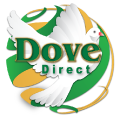How Video and Direct Mail Raise the Bar
Let's examine the video platform level. Significant consumer behavior changes have come to the fore as it relates to how and where consumers watch videos. The rising usage of new platforms such as TikTok and Instagram in recent years is a boon for targeting Millennials and Gen-Z demographic segments. However, it's essential to understand that while TikTok and Instagram platforms are rising in video view usage, current data indicates that not everyone relies on TikTok and Instagram for their primary video platforms. YouTube continues to hold the highest number of video engagements per a short survey of consumers. No one should be surprised that YouTube and Facebook continue to dominate the video platforms. The two platforms contain substantial video viewing audiences over all other social media and video platforms.
Our Quote of the Day:
"Business decision makers LOVE online video because it gives them the most amount of information in the shortest amount of time." — Robert Weis
s
Top Social Media Video Platforms
To be clear, researchers asked the question, "On which local media platform do you most commonly watch video?" The following five platforms dominated the data results:
1. YouTube - 35%
2. Facebook -25%
3. TikTok - 19%
4. Instagram - 8%
5. Other - 13%
Note that YouTube and Facebook garner 60% of the viewing audience across social media platforms. The remaining social media and video platforms lag with single digits, including Twitter clocking a mere 2%, with 1% each for Reddit, Tumblr, Pinterest, Snapchat, LinkedIn, and several others that held a 6% cumulative ranking. Note that while TikTok and Instagram rank third and fourth, respectively, it does not mean that marketers should make moves to bump up the budgets for those platforms at the expense of YouTube or Facebook. Instead, marketers should view TikTok and Instagram as critical content destinations in the coming years. Moreover, marketers may want to dip their feet into investing dollars on TikTok and Instagram; however, sticking with YouTube and Facebook makes more sense when budgeting is tight.
Never forget who your target audience may be. If the primary targets are Millennials and GenZ, investing in TikTok and Instagram will make sense. Conversely, it is imperative to realize that TikTok and Instagram provide much smaller playing fields regarding available eyeballs. The smaller the pond, the fewer the fish, and thus, a smaller pond to compete within.
You may be wondering how the video viewing numbers break out by sector. That said, at this time, there is no precise data for video viewing by industry. However, it's a good bet to keep researching that question, as more than likely, data survey specialists are on the hunt to provide answers. Here's what we do know.
Networked Insights offered a small glimpse noting that technology, automotive, and fashion industries fair best on YouTube. However, marketers and brands should consider that all industry sectors buy into the video marketing content strategy.
Combating the Scroll Syndrome
Consumer behavior is shifting, and by default, scrolling more than ever. Due in part to the effects of the pandemic, particularly with the lockdowns of 2020, and more recently with the flow of workers voluntarily leaving their jobs in 2021 (over 15 million and counting), consumer behavior continues to shift, sometimes at an accelerated rate. Simultaneously, many consumers hope to recover or make up for all that was lost the previous year. This phenomenon is the primary reason audiences are now watching more videos wherever and whenever they can find a moment.
Video watching is happening everywhere you look. In grocery store lines, at sporting events, while dining at a restaurant, during an Uber ride, simultaneously while watching television and scrolling on a mobile device, or while on the move with a mobile device in hand, and anywhere else where a screen is present. This video watching activity represents a voracious consumer appetite that intelligent brands and marketers should heed and leverage.
History suggests that marketing activities worldwide will not slow down, irrespective of the direction behavioral habits are heading. The reverse occurs due to the unrelenting delivery pace that dictates folks' time to watch or read marketing content. Even though consumers have more time to view hours of video content, the scale of video content produces an adverse effect whereby audiences scroll for more content, in some cases either while a video is playing or immediately after any video begins. This phenomenon highlights a critical factor, which is up for debate.
Recent reports show that longer videos command more initial viewing interest, while others argue shorter videos are more likely to entice viewership. This minimal, more concise video concept reflects that shorter attention spans are now a preeminent factor that today's consumers are experiencing. Further, those supporting short videos state that more straightforward video content contains a higher probability of injecting more punch for instant gratification mindsets, thus satisfying the incessant, must have now, viewer obsessions.
You may recall, from the not too distant past, the short video platform known as Vine. Vine videos were limited to 6 seconds and, during its early inception, were seen by many as "the cat's meow." Vine is partly responsible for the phrase "snack-bites" to promote their six-second video format effectively. The continuing debate and recent data findings suggest an emerging social media video tactic where marketers should take advantage of diminishing attention spans by mastering the art of "snackable" or super short-video content throughout 2021. Marketers and brands that take the plunge and master the art of creating snackable videos will likely benefit immensely by capturing viewers whose attention spans are already in a diminished state.
Already, static images on social media have taken a backseat to snackable video content. Meisha Bochicchio, Content Marketing Manager at Wistia, recently put forth the following statement, "Using snackable videos on social can actually drive more engagement than static images. Further data uncovered from a recent study found that 60% of marketers reported additional clicks from video posts when compared with clicks via static images."
Why Direct Mail Marketing Leads
It's no secret anymore. Direct mail marketing is surging, and its value has increased exponentially. Several American Marketing Association (AMA) surveys indicate that direct mail marketing has enjoyed a steady resurgence during the past few years. Among the AMA data points are the following. Direct mail marketing has become the number one marketing medium for consumer trustworthiness. Additionally, direct mail currently leads the media pack for response and engagement rates.
Direct mail marketing's recent successes hinge on the integration of advanced print press technology. Most notably, VDP technology, an acronym for variable digital printing or variable data printing, is driving the resurgence. High-level personalization is now available through the use of VDP technology. This VDP technology provides an extensive scope of variables that places personalization on a higher threshold. VDP can offer a host of data points that can be organized, merged, and created to provide an extensive compilation of demographic and psychographic markers. This VDP technology can give the brand and marketing team a significant, unique, and comprehensive target makeup.
Precise target market personas are now possible with data collection and management that feeds digital print presses equipped with VDP technology.
Direct mail marketing is a fundamental driver that can point targeted recipients to a direct link for any online digital destination. VDP processed print collateral can also integrate embedded QR codes in direct mail collateral. Since we are experiencing diminishing attention spans, direct mail marketing confers among the attention span audience a limited marketing concept where a recipient can consume content in a less distracting environment. Generally, a personal dwelling or business locale is ripe for providing direct mail content. This perspective means that competing online content may be on the back burner.
Further, the idea of those time-wasting unlimited refreshes is no longer a distraction, nor is there an inclination or overwhelming impetus to continuously scroll to the next barrage of content engagement posts. In a genuine sense, direct mail marketing can be the leader to introduce voracious video audiences to specific video content. Marketers should think of direct mail marketing as video's best friend.
The Net-Net
Video data content analysis offers a plethora of angles, ranging from content creation statistics, various video lengths and their rates of success, video placement, different established and newly minted social media viewing platforms, and most importantly, the best practices to reach the primary target market as well as tertiary market segments. Over the course of 2020, the viewing audiences took in over 20 billion hours of video! The current trend suggests that more video content will be available, leading marketers and brands to rethink how to deploy video marketing campaigns to attract more viewers effectively.
Most notably, as Facebook and other platforms continue to garner headlines for various missteps, including teen self-esteem issues, misinformation, and fake news, direct mail marketing is the game-changer for attracting and engaging more viewers from a trustworthy perspective. In the final hour, variable data print technology offers a more comprehensive degree of personalization that provides better targeting in conjunction with the capability to deliver increased response and engagement rates for all brands. We hope you found value in this article, and thanks for reading "How Video and Direct Mail Raise the Bar!"
Let's talk about integrated business solutions and how they can move your messages forward, help grow your business, change behavior, and improve the customer experience. Let us show you how to improve your document processes to optimize your workflow, reduce costs, and maximize your organization's printing, letter shop, and mailing capabilities. Dove Direct has an official USPS certified bureau located within our offices to save you time and money. We can even create a demo file for you. For more information, call Carla Eubanks at 404-629-0122 or email Carla at This email address is being protected from spambots. You need JavaScript enabled to view it..
Dove Direct, your Atlanta vertical integrated print and mail solutions provider, offers organizations end-to-end data, printing, and mailing solutions:
- Data Management
- Variable Digital/Data Printing
- LetterShop and Fulfillment
- Digital Mail Scanning Services
- Fully Automated MLOCR Presort Bureau
- Marketing and Production Management Support
- Secure Data Life Cycle Management
If you don't want to wait, you can reach Dove Direct today by calling 404-629-0122 or completing the Contact Form.





